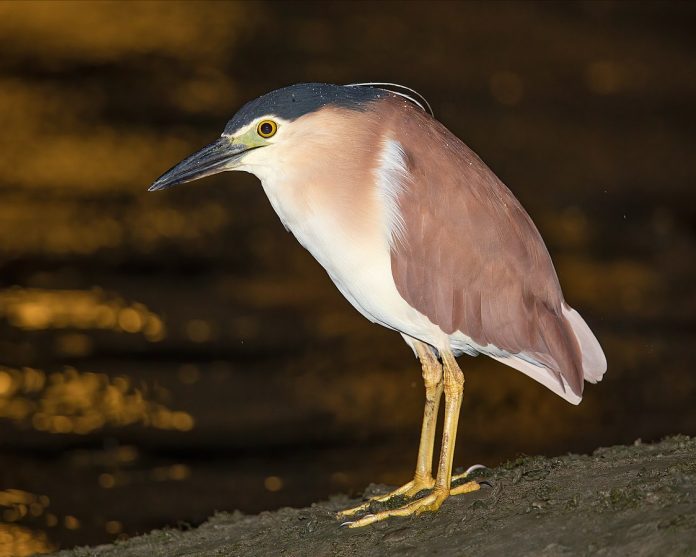The nocturnal habits and chunky, cinnamon-toned form set the Rufous Night Heron apart from other Australian herons. There is a higher percentage of them-up 85 percent-also carry the virus for Murray Valley encephalitis. Rufous Night Heron camp by day in small groups or hundreds inside the cover of leafy trees close to water, dozing, heads on breasts.

At dusk they fly out, croaking sporadically, to forage alone along shallows and shores, fresh or briny, in the early night and before dawn. There they hunt for fish, amphibians, and crustaceans, as well as insects, chicks, and eggs stolen from other birds. Night herons watch and stalk slowly along or stand and wait, at times vibrating their bills in water to attract prey; sometimes the birds plunge feet-first into deep water after quarry.
Prey is caught with a quick bill jab. At the beginning of breeding, males and females converge independently at colonies of tens to thousands. Males separate to stake out small nesting territories, the diameter of a bill-stab, and attract females with elaborate snap-stretch and wheezing song-dance displays. In the dance, they tread with their feet and jerk their heads down to their toes, raising crest and nape plumes with hiccoughing pulps.
Each pair mates only for the season and usually raises a single brood. Males collect and present material to their mates to construct a flimsy platform of twigs. Eggs are laid at two-day intervals and hatch in sequence. Both sexes feed their young by regurgitation, and later cough food into the nest for the chicks to pick up. After two weeks the young wander among neighboring territories, returning to their nest only to be fed.
The bird is also known as Nankeen Night Heron, Night Heron. The size of the Rufous Night Heron is about 560-660 mm in length. The adults and both sexes are similar; males are larger. However, the upper surface from the lower neck to the wings and tail is plain to cinnamon-rufous. The crown is slate-black, with two-three white nape plumes all year. The ventral surface is white with cinnamon bloom at the sides. Face skin dull lemon; cobalt-blue in courtship.
The eyes are bright yellow; orange in courtship, with a black bill. Legs and feet greenish-yellow; pink-red in courtship; claws black. The immature is brown above, white below, streaked dusky brown; wings are spotted buff-white along with the bill is dull yellow. The legs and feet are yellowish olive-gray. The downy young are mouse-gray; with bill and feet dull olive-gray.
Rufous Night Heron call is a guttural croak; rasps, buzzes, and clacks at the nest. Young screech. The nesting and breeding season take place from September to March-April, mainly in the southwest and southeast. Rufous Night Heron builds a nest a loose, decorated with a leaf-lined platform of sticks in a tree or shrub up to 25 meters above water; also in-ground crevices on treeless islands.
Usually, there are 2 to 3 eggs; chalky light turquoise; oval, about 51 x 37 mm. The incubation period is about three weeks, for both sexes. The young bird fledges in about seven weeks. The distribution of Rufous Night Heron is permanent and semi-permanent fresh and brackish waters throughout Australia. Nomadic; breeding centered in the Murray-Darling basin, also Indonesia to Melanesia. There are six races; one in Australia and New Guinea.
Related Reading – The Beautiful Great Blue Heron







